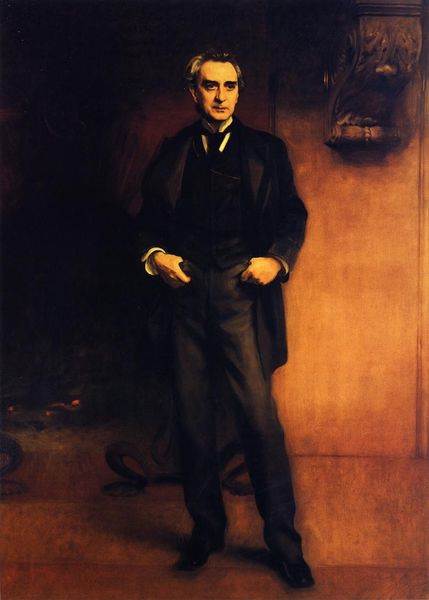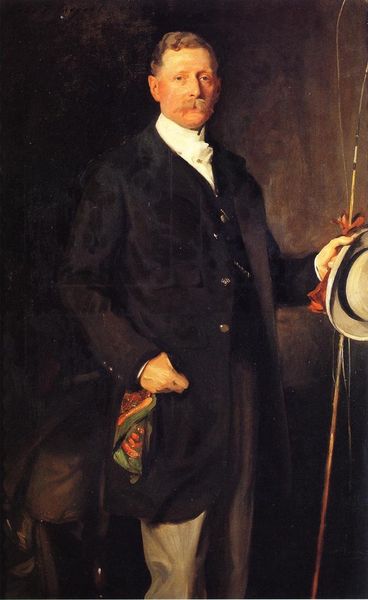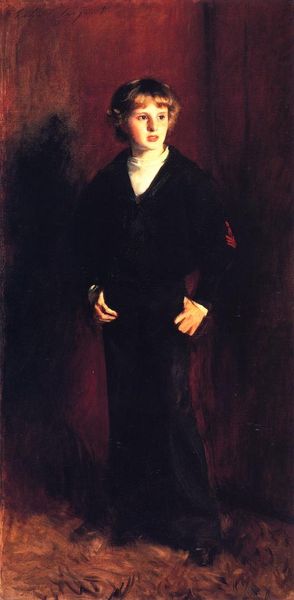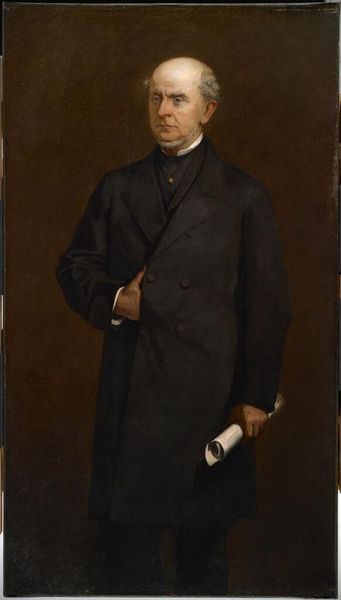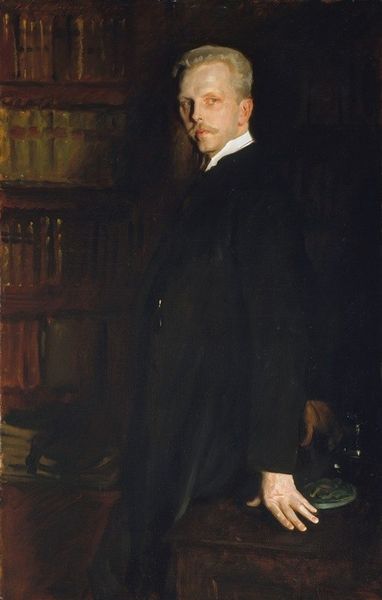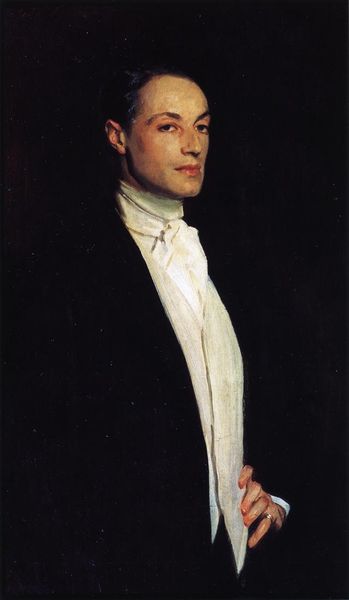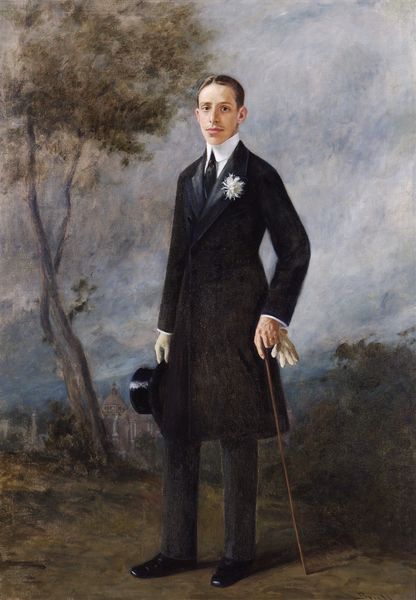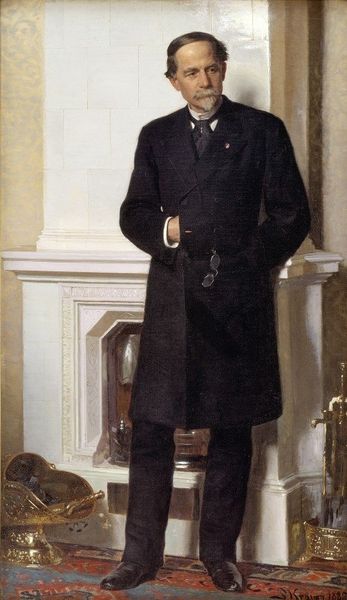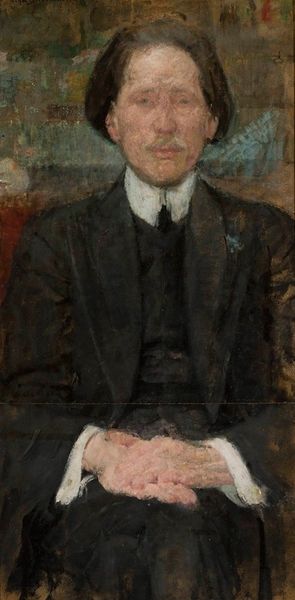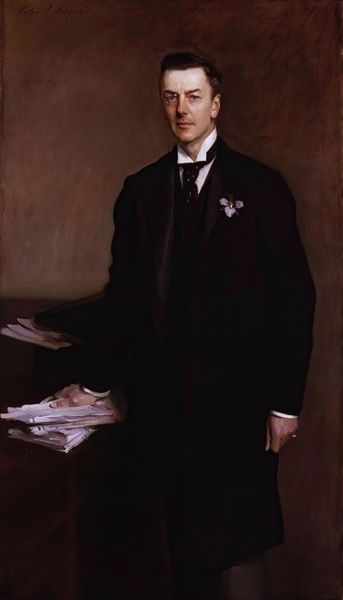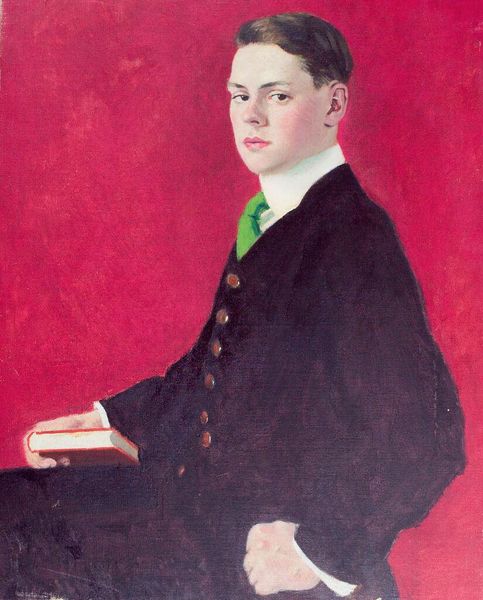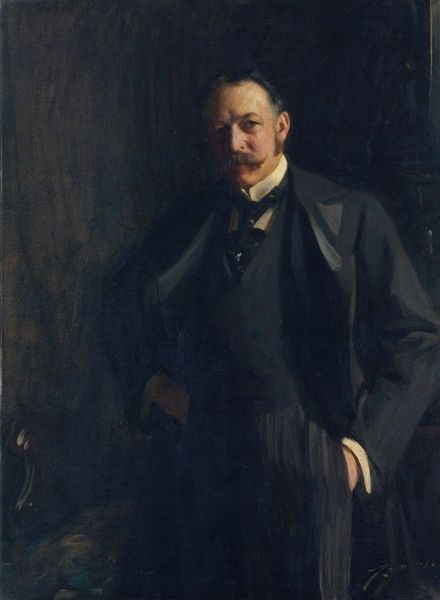
Copyright: Public Domain: Artvee
Editor: So, here we have Pascal-Adolphe-Jean Dagnan-Bouveret's "Portrait of Joannes de Stuers at 20 years old," painted in 1897. It's oil on canvas. The subject has this very direct, almost challenging gaze. What’s your initial reaction? Curator: My eye is immediately drawn to how Dagnan-Bouveret navigates the shifting role of portraiture at the close of the 19th century. This isn't simply about capturing likeness. Think about photography's increasing presence then, and how that influenced painting. What's the social status being presented here, and how does Dagnan-Bouveret use visual cues to signal that? Editor: Well, the dark suit and crisp white collar suggest a certain level of respectability and wealth, maybe even professional aspirations. The book he’s holding… does that point to intellectualism, a cultivated identity? Curator: Precisely. Consider how portraiture traditionally served as a tool of power and commemoration for the elite. Now, the rising middle class increasingly commissioned portraits to cement their social position. But it's not just documentation; it's construction. This pose, the subtle Impressionistic brushwork... they all contribute to crafting a specific narrative. To what extent do you think the gaze of the sitter plays into that? Editor: It almost feels staged, deliberately projecting confidence and a sense of purpose, but without feeling ostentatious. Maybe a new kind of bourgeoisie respectability? Curator: Yes, precisely! This image speaks volumes about the shifting societal landscape. Think of how these representations circulated within families, reinforcing those values. What might it have meant to his family? To wider society? Editor: I hadn't considered it in that context – less about just the individual and more about what the portrait was supposed to *do* socially. Curator: Exactly. Looking at art history with a social lens gives artworks another life.
Comments
No comments
Be the first to comment and join the conversation on the ultimate creative platform.
